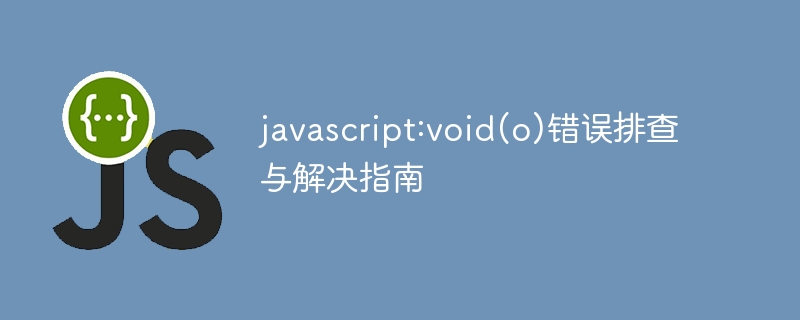解决 "javascript:void(o)" 错误的步骤:检查变量定义,确保 "o" 已定义并赋值。验证引用是否正确,检查是否尝试访问无效的属性或方法。使用异常处理来捕获错误并提供有意义的错误消息。通过控制台调试输出变量和属性值,进行调试。如果 "o" 来自网络请求,请验证响应是否成功并包含预期的数据。

简介
`"javascript:void(o)" 错误表示尝试访问一个无效或未定义的对象。本文将指导您识别、排查和解决此错误。
排查步骤
try...catch 块来捕获错误,并提供有意义的错误消息。console.log() 输出变量和属性值,进行调试。解决示例
错误:
const o = undefined; console.log(o.name); // Error: TypeError: Cannot read properties of undefined (reading 'name')
解决方案:
检查变量是否已定义并赋值。
const o = { name: 'John' };
console.log(o.name); // 'John'错误:
const o = document.getElementById('myElement');
if (o === null) {
// 处理找不到元素的情况
}
console.log(o.style.color); // Error: TypeError: Cannot read properties of null (reading 'style')解决方案:
使用三元运算符或 if 语句,在使用之前检查元素是否存在。
const o = document.getElementById('myElement');
const color = o ? o.style.color : null;错误:
fetch('https://api.example.com/users')
.then((res) => res.json())
.then((data) => {
console.log(data.users[0].name); // Error: TypeError: Cannot read properties of undefined (reading '0')
})
.catch((err) => {
// 处理网络请求错误
});解决方案:
捕获并处理网络请求错误,并验证响应中是否有预期的数据。
fetch('https://api.example.com/users')
.then((res) => {
if (res.ok) {
return res.json();
} else {
throw new Error('Network request failed');
}
})
.then((data) => {
console.log(data.users[0].name);
})
.catch((err) => {
console.error(err);
});以上是javascript:void(o)错误排查与解决指南的详细内容。更多信息请关注PHP中文网其他相关文章!




